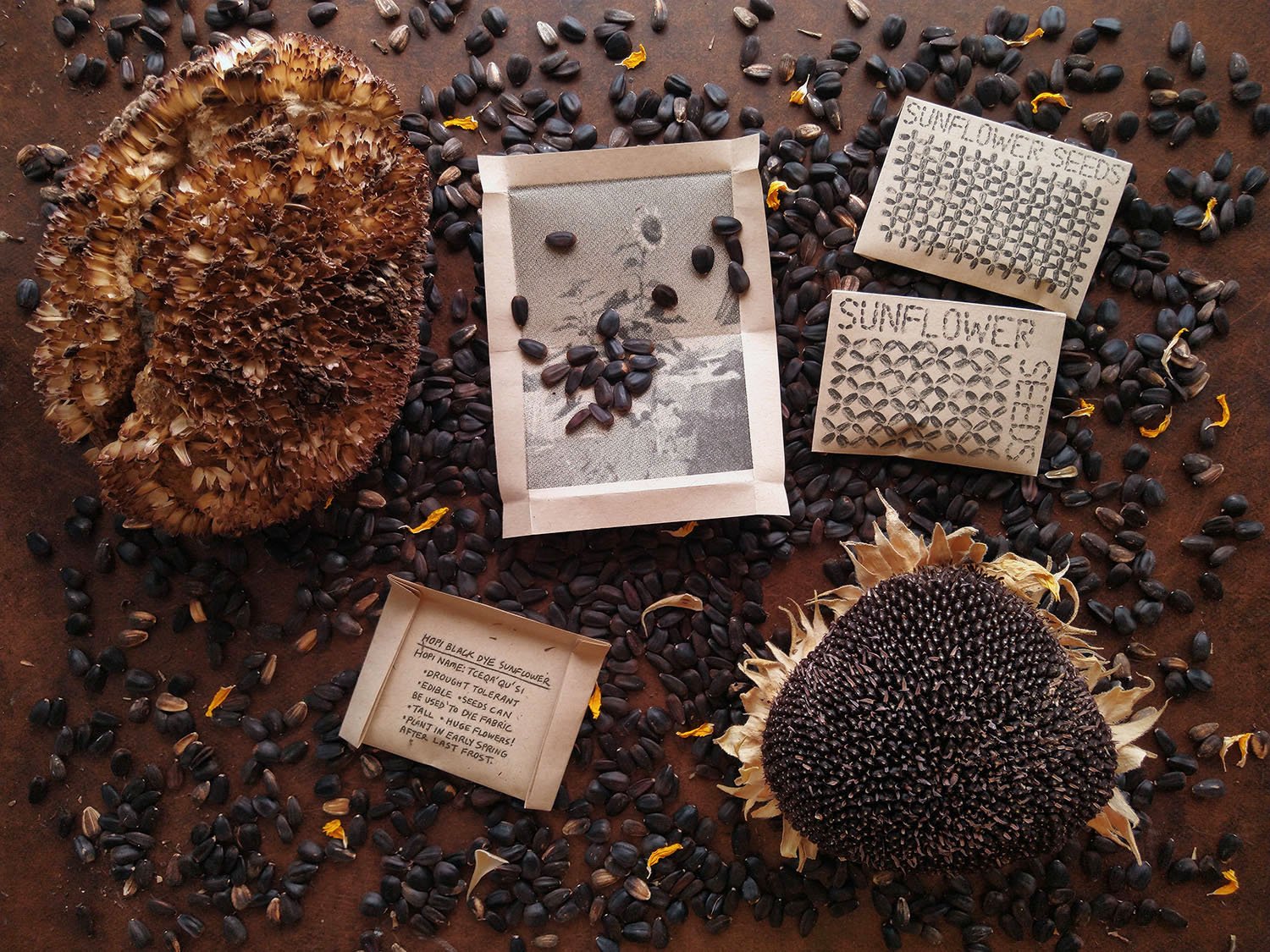Sunflower Seed Editions is an ongoing gardening and seed-sharing project. I grow sunflowers in my garden, harvest the seeds and pack them in clay pellets. Packing seeds in clay pellets allows for easy distribution and germination in a variety of environmental conditions.
The clay pellets are packaged in risograph prints I design myself. Each package contains seed pellets with information and planting instructions. These are sold, donated, and distributed within my community which propagates more sunflowers.
Sunflower Seed Editions: 2021
Sunflower Seed Editions began in 2020. I was imagining ways to make my practice more accessible, relational, and responsive to the precarity of humanity’s earth-bound future. During this process I learned about seed-sharing and mutually supportive plant/human relationships from artists and writers like Katie Gourley, Robin Wall-Kimmerer and Leanne Betosamosake Simpson.
Around the same time I was drawn to a dried sunflower seed-head I saw on the ground at my local urban farm. I picked it up and planted the seeds in my Chicago parkway the following spring. The year after that I was sharing the seeds with my loved-ones and neighbors.
Sunflower Seed Editions: 2022 / Sunflower bed: Chicago, 2022
Sunflowers are healers. They are important plants for soil remediation in urban areas because they pull heavy metals (like lead) out of our soil. Sunflowers are generous. The plants are massive and produce hundreds, if not thousands of seeds. Every single part of the plant is edible.
Sunflower Seed Editions: 2023
As of 2023 I am distributing Hopi Black Dye Sunflowers (Hopi name: Tceqa' Qu' Si). Hopi Black Dye sunflowers can be used to make a fabric dye with natural fibers. Hopi people use the seeds to dye wool, cotton and baskets. Hopi Black Dye Sunflowers are also drought tolerant. This makes them an ideal plant to distribute in Oklahoma, where I currently reside.
Sunflowers grown from seeds I sent to friends and family







